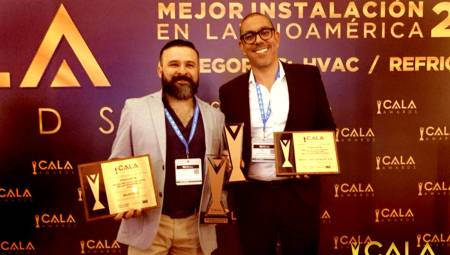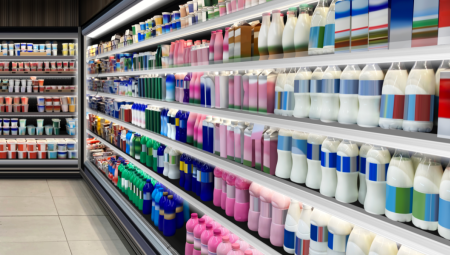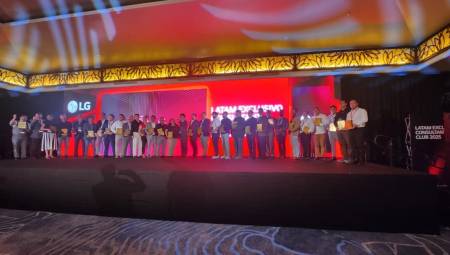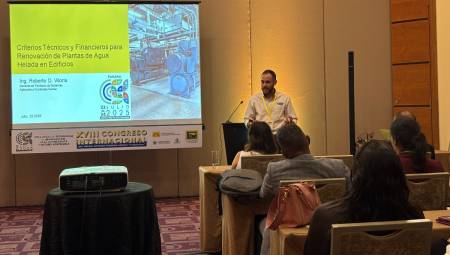If we take into account that the supply of oil is finite, and that the conservation of energy prevents the leakage of foreign currency and helps the environment, we can understand the importance of this.
By: Alfredo Sotolongo
I am working on a number of articles related to this topic and in future publications we will present the history of what has been achieved in energy conservation in air conditioning systems.
In this article we will concentrate on the variable volume of air, available equipment and specific applications. Variable air volume can be defined as the system that achieves comfort using the least amount of energy.
It is important to note that in most of our countries, which are geographically located in tropical areas, between the tropics of Cancer and Capricorn, the presence or absence of the Sun determines the changes in sensitive heat that in turn represents the amount of air to be supplied to the conditioned area.
At the end of the 50s, long before the energy crisis of the 70s, the first steps were taken by the Barber-Colman company that developed the Heat-of Light system and Follow-the-Sun. These developments were based on two main factors:
Heat of Light - due to the inefficiency of the luminaires, in which much of the energy was converted into heat and most of that heat was radiated into the conditioned environment.
Following the Sun - the largest sensitive charge that determines the amount of air to be supplied to an environment is the Sun. When the Earth rotates, exposure to the Sun changes and therefore, the amount of air to be supplied to each façade of the building changes.
Barber-Colman developed a luminaire that, when returning the air through it, transferred the heat emitted by the lights to the return air preventing that heat from being projected towards the conditioned area and when returning to the full return, that heated air was induced by mixing boxes and thus the desired comfort was achieved, avoiding having to use additional energy to reheat the air.
With the introduction of the energy crisis of the 70s, to minimize energy waste, ASHRAE contributed to recommendations and research to achieve more efficient air conditioning applications. Many of which became norms and some into laws.
As a result of this crisis and motivated to avoid having similar situations in future crises, the private company has dedicated and continues to dedicate considerable economic and human resources to develop components and systems to avoid wasting energy in the application of air conditioning systems.
The purpose has been to harness energy, which was previously wasted, to reduce thermal capacity with minimal additional investment or to recoup the investment in three years or less.
Over the years much more efficient luminaires were developed, which produce the same intensity of light (Lumen) with less waste of energy and therefore less heat towards the environment and towards the full return, which penalized the air handler, since the engine required greater power because, in order to induce the pre-heated air of the full return these boxes needed the primary air coming from the handler to be at high speed and / or pressure, consuming more energy.
In order to minimize the power of the handler's motor, variable volume boxes with integrated fans (fan powered) were developed to induce full return air without needing high pressure and / or high speed in the primary air that came from the handler. These variable volume boxes, with integrated fan, have their justification in certain types of applications.
To really achieve the concept of variable air volume, it is necessary to control the pressure of the supply air to modulate the rotation of the centrifugal fan of the handler and thus reduce the consumption of the engine. The ideal method of control is the frequency "inverter" since by reducing the revolutions of the fan, the power of the motor is reduced exponentially.
{mospagebreak}
The boxes of variable volume, is the equipment that for many years has been used to achieve the balance between comfort and the reduction of energy consumption. However, when using variable volume boxes that supply multiple rooms, control of the entire area served by each box is contingent on the thermal behavior of the room in which the thermostat is located. This creates overcooling in some rooms and heat in others. In those that suffer from cooling, energy is wasted and in those that are heated, the comfort that are the two basic concepts of the variable volume of air is lost.
Variable volume boxes, like any type of valve that modulates a fluid, need to create a pressure drop and almost always add more than 1" of static pressure to the system, penalizing the power of the air handler's fan motor. In addition, the diffusers used with variable volume boxes are the same as those used with constant volume systems and are selected for the maximum air volume. When the box reduces the volume of air, these diffusers, not being able to maintain the constant speed because their discharge area is fixed, reduce the air pull which does not allow an adequate air distribution.
In commercial and industrial applications the variable volume of air is widely justified as it satisfies the basics of variable air volume. In addition, in industrial applications where it is required to keep the relative humidity below 55% and you want to avoid overheating the air, variable volume of air fulfills that purpose with the minimum investment.
At the end of the 70s, the company Acutherm developed the Thermafuser smart diffuser with its integrated thermostat that does not need external power to operate. This diffuser replaced the variable volume boxes and constant volume diffusers used with the boxes, allowing individual control per room and avoiding both overcooling and loss of comfort.
The more individual control per room there is, the more the concept of variable air volume is achieved. For example, one of the conditions that occurs in office buildings is that in some room the people who were considered in the load calculation are absent and that in addition, it has the lights off creating over cooling and in turn waste of energy.
It also presents the case of existing buildings to which another building is built next door, eliminating solar exposures that were taken into consideration in the original design resulting in overcooling.
- Independent control per room at the lowest initial cost.
- It requires low air pressure just like a constant volume diffuser, which represents the lowest operating cost.
- It keeps the air pull constant regardless of changes in air volume because it changes the air discharge area.
Every type of equipment that the private company has developed over the past 40 years for use in variable air volume systems has a justifiable application. The important thing is to be able to identify which is the most effective in each particular application.
About the Author: Mr. Alfredo Sotolongo president of PROTEC, INC. is certified as a Professional Engineer in Puerto Rico and in the State of Florida, has more than 40 years of experience in the application and sale of systems and equipment for energy conservation. He is a member of ASME (American Society of Mechanical Engineers), AEE (Association of Energy Engineers) by which he is certified as an Engineer in Energy Management and asHRAE of which he was president of the Miami chapter. In addition, he has presented numerous talks on the topic of energy conservation.
--------------------------------------------------------------------------------------------------
Square or featured
For every Kw-Hr saved, the following are avoided:
0.8 lbs. of coal
1.48 lbs. of carbon dioxide
0.25 oz. of sulphur dioxide
0.11 oz. of nitrogen oxide.













